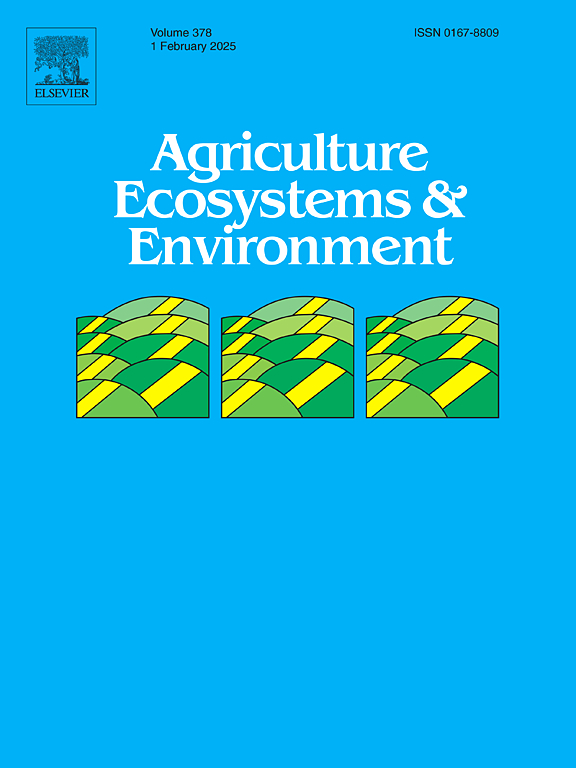Agricultural land use modulates responses of soil biota and multifunctionality to increased antibiotic pressures
IF 6
1区 农林科学
Q1 AGRICULTURE, MULTIDISCIPLINARY
引用次数: 0
Abstract
Antibiotic contamination has been a global agricultural issue due to heavy discharge and undesirable consequences. However, the link between antibiotic pressures and soil multifunctionality in agricultural ecosystems remains unclear. In this study, we investigated the antibiotic levels, soil functions, and their relationships in two land use types (peanut fields vs. maize fields) in a manure-amended agricultural area. The results showed a significant non-linear relationship between antibiotic pressures and soil multifunctionality in agricultural ecosystems. Antibiotics exhibited an inhibitory effect on soil functioning at high concentrations. Specifically, soil bacterial diversity and richness, earthworm abundance, and nitrogen mineralization were significantly suppressed by increasing antibiotic pressures. Increasing antibiotic contamination had peak effects on soil multifunctionality loss at a threshold of 81 %, resulting in a decrease of −1.24 in functions. Land use played a significant role in modulating the effects of antibiotic levels on soil multifunctionality. A significant response of soil function to antibiotics was observed only in peanut fields, not in maize fields. Additionally, differences in antibiotic pressures promoted the functional turnover in agricultural ecosystems. Therefore, controlling antibiotic contamination in soil is crucial for the sustainable provision of soil ecosystem functions, considering the role of land-use modulation in planning and management decisions.
农业用地利用调节土壤生物区系和多功能性对抗生素压力增加的反应
抗生素污染一直是一个全球性的农业问题,其严重的排放和不良后果令人担忧。然而,农业生态系统中抗生素压力与土壤多功能性之间的联系仍不清楚。在这项研究中,我们调查了粪肥改良农业区两种土地利用类型(花生田和玉米田)中的抗生素水平、土壤功能及其关系。结果表明,农业生态系统中的抗生素压力与土壤多功能性之间存在明显的非线性关系。高浓度抗生素对土壤功能有抑制作用。具体来说,土壤细菌多样性和丰富度、蚯蚓丰度和氮矿化度都因抗生素压力的增加而受到显著抑制。抗生素污染的增加对土壤多功能损失的影响在阈值为 81% 时达到顶峰,导致功能下降-1.24。土地利用在调节抗生素水平对土壤多功能性的影响方面发挥了重要作用。只有在花生田,而不是玉米田,才能观察到土壤功能对抗生素的明显反应。此外,抗生素压力的差异促进了农业生态系统的功能转换。因此,考虑到土地使用调节在规划和管理决策中的作用,控制土壤中的抗生素污染对于持续提供土壤生态系统功能至关重要。
本文章由计算机程序翻译,如有差异,请以英文原文为准。
求助全文
约1分钟内获得全文
求助全文
来源期刊

Agriculture, Ecosystems & Environment
环境科学-环境科学
CiteScore
11.70
自引率
9.10%
发文量
392
审稿时长
26 days
期刊介绍:
Agriculture, Ecosystems and Environment publishes scientific articles dealing with the interface between agroecosystems and the natural environment, specifically how agriculture influences the environment and how changes in that environment impact agroecosystems. Preference is given to papers from experimental and observational research at the field, system or landscape level, from studies that enhance our understanding of processes using data-based biophysical modelling, and papers that bridge scientific disciplines and integrate knowledge. All papers should be placed in an international or wide comparative context.
 求助内容:
求助内容: 应助结果提醒方式:
应助结果提醒方式:


